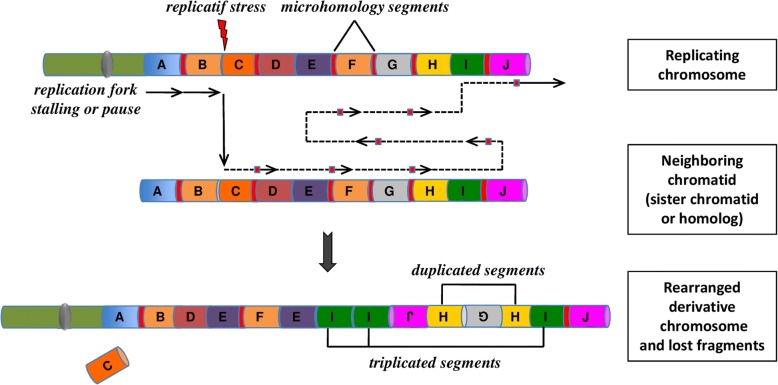Fig. 2.
The concept of chromoanasynthesis: the phenomenon can arise when a replication fork stall or collapse. The lagging strand of the defective fork disengage and a series of micro-homology-dependent template and switching events occur with other replication forks in physical proximity, before the completion of DNA synthesis on the original template. The process leads to the formation of complex genomic rearrangements that typically involves duplications and triplications. The insertion of short nucleotide sequences (3–5 bp) at breakpoint junctions provides evidence for a replication-mediated process. Two mechanisms, Fork Stalling and Template Switching (FoSTeS) and Microhomology-Mediated Break-Induced Replication (MMBIR), have been identified as responsible for this process of massive genomic rearrangement

